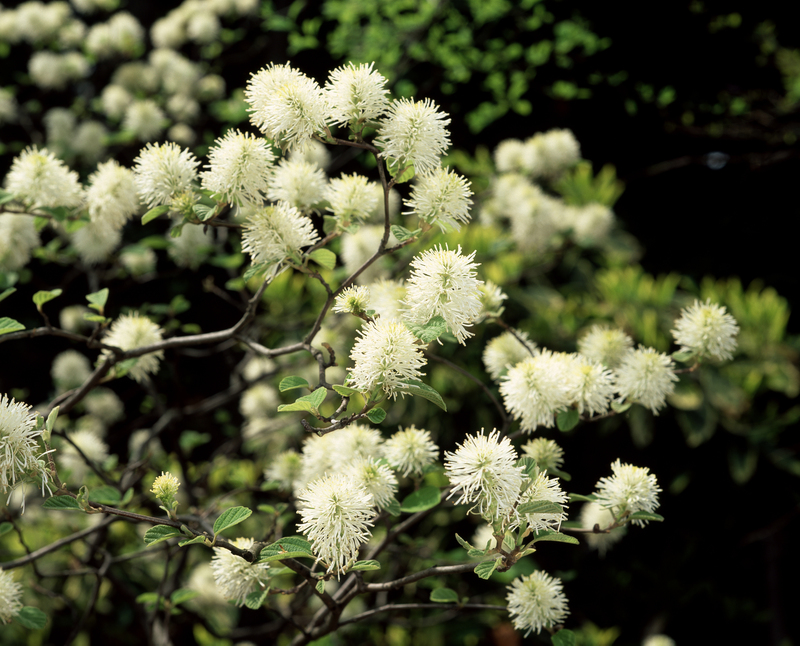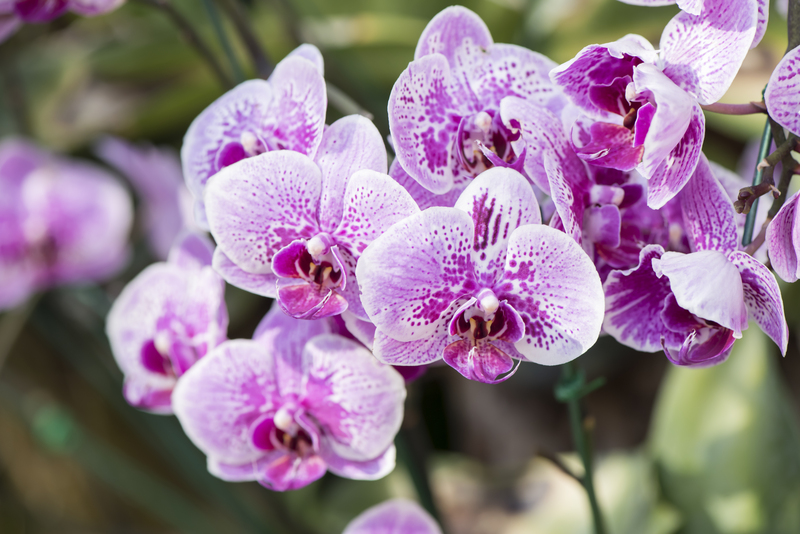Essential Tips for Beautiful Orchid Care
Posted on 23/05/2025
Essential Tips for Beautiful Orchid Care
Orchids are among the most captivating and exotic houseplants, prized for their stunning blossoms and unique foliage. While they may seem intimidating to care for, with the right techniques, anyone can enjoy flourishing and beautiful orchids at home. This comprehensive guide provides essential tips and handy nuggets of wisdom for orchid growers at every level. Discover the best practices in orchid care to ensure your flowers thrive!
Understanding Orchids: A Brief Overview
Orchids belong to the family Orchidaceae, boasting over 25,000 species and hybrids. Their diverse shapes, sizes, and colors make them sought-after by collectors and plant lovers worldwide. For successful orchid cultivation, understanding their natural habitats is crucial; most are epiphytes, growing on trees in tropical regions. This fact significantly influences how you should approach your orchid care routine.
Main Types of Orchids for Enthusiasts
- Phalaenopsis (Moth Orchids): Ideal for beginners, these are easy to maintain and bloom year-round.
- Cattleya Orchids: Known as the "Queen of Orchids" because of their large and fragrant flowers.
- Dendrobium Orchids: Beautiful and diverse, ranging from tiny blooms to striking large flowers.
- Oncidium Orchids: Sometimes called "Dancing Ladies" due to their unique flower shape.
- Vanda Orchids: Renowned for vibrant colors and a preference for bright light and humidity.

Getting Started: Choosing and Potting Your Orchid
How to Select a Healthy Orchid
- Inspect the roots: Look for firm, green (when moist) or white (when dry) roots. Mushy or brown roots signal root rot.
- Leaves: Select plants with perky, glossy green leaves free from spots and deformities.
- Buds & Flowers: Choose orchids with unopened buds for longer blooming displays at home.
Best Orchid Potting Mix and Containers
- Potting Media: Use a chunky, quick-draining orchid mix, usually containing bark, perlite, charcoal, or sphagnum moss.
- Pots: Select pots with ample drainage holes--clear pots are great for monitoring root health.
- Caution: Avoid standard potting soil, which retains too much moisture and may suffocate roots.
Watering Orchids the Right Way
One of the most common mistakes in orchid maintenance is overwatering. Orchids dislike "wet feet" and prefer drying out slightly between waterings.
Top Watering Tips for Orchids
- Water frequency: Water every 7-10 days for Phalaenopsis, and more frequently for thin-rooted or higher-light orchids like Vandas.
- Method: Soak the potting mix thoroughly and let water drain out completely. Avoid letting the pot sit in stagnant water.
- Use lukewarm, distilled, or rainwater: Tap water with high salt or fluoride can damage sensitive roots.
- Signs of overwatering: Yellow, limp leaves and mushy roots.
- Signs of underwatering: Wrinkled leaves and shriveled roots.
Optimal Light Conditions for Healthy Orchids
Orchid flower care begins with understanding their light preferences, which mirror their original habitats beneath forest canopies. Providing the correct intensity and duration is essential for robust blooms.
How Much Light Do Orchids Need?
- Bright, indirect sunlight: Most orchids (especially Phalaenopsis) thrive on east-facing windowsills or behind sheer curtains on the south or west side.
- Light indicators: Healthy leaves should be light to medium green. Very dark leaves indicate too little light; yellowish or scorched leaves mean too much.
- Artificial grow lights: In low-light homes, consider LED or fluorescent growing lights to provide 12-14 hours of daylight during winter.
Temperature and Humidity Guidelines
Orchids flourish in conditions mimicking their tropical or subtropical origins:
- Temperature: Keep daytime temps between 65-80?F (18-27?C), and night temperatures 10-15?F (6-8?C) cooler for optimal blooming.
- Humidity: Target 40-70%. Increase humidity with humidity trays, room humidifiers, or by grouping plants together.
- Air circulation: Gentle air flow prevents fungal diseases; a small fan set on low works well.
Feeding Orchids: Fertilizer Tips for Exquisite Blooms
Proper feeding is pivotal in your orchid plant care arsenal. While orchids are light feeders, consistent fertilization enhances growth and flower production.
What Kind Of Fertilizer Is Best?
- Balanced Orchid Fertilizer: Use a 20-20-20 fertilizer or one made specifically for orchids.
- "Weakly, Weekly" Rule: Dilute fertilizer to 1/4 strength and feed every week during active growth.
- Flush regularly: Rinse the potting mix with plain water monthly to prevent salt buildup.
- Pause feeding: When your orchid is dormant or not producing new growth, reduce or halt fertilizer.
Repotting Orchids for Continued Health
Repotting is another vital aspect of caring for beautiful orchids. Over time, potting media decomposes, restricting airflow and increasing disease risk. Here's how to know when and how to repot:
When Should You Repot an Orchid?
- Every 1-2 years, or when the media breaks down and roots outgrow the pot.
- Tell-tale signs: Water runs straight through the pot, roots spill over the edges, or growth slows noticeably.
How to Repot Your Orchid
- Gently remove the orchid and shake off old mix.
- Trim away dead or mushy roots with sterilized scissors.
- Place in fresh orchid mix, ensuring roots are evenly distributed.
- Avoid over-packing the medium--roots need air!
Managing Orchid Pests and Diseases
Regular inspection is imperative in beautiful orchid plant care. Common pests and diseases, if caught early, can be managed with minimal impact.
Key Signs of Trouble
- Scale insects, spider mites, aphids: Look for sticky residue, sand-like grains, or webbing.
- Fungal & bacterial issues: Yellowing, black spots, or mushy patches on leaves or pseudobulbs.
How to Respond
- Physically remove pests with cotton swabs dipped in rubbing alcohol.
- Isolate infected plants to prevent spread.
- Use horticultural soap or neem oil sprays as a gentle, non-toxic option.
- Improve air circulation, avoid leaf wetness, and remove dead tissue promptly.
Encouraging Reblooming: Expert Orchid Flower Care
Want your orchid to bloom again and again? Follow these dedicated strategies to keep your plant flowering beautifully:
- Correct light: Without enough light, many orchids will not rebloom.
- Cool night temps: For Phalaenopsis, a temperature drop (about 10?F at night) often triggers flower spikes.
- Prune spent spikes: Cut just above a node to encourage secondary spikes, but remove entirely if brown or dead.
- Sustain proper care: Continue feeding, watering, and checking for stress between flowering cycles.
Common Orchid Care Mistakes and How to Avoid Them
- Overwatering: The number one killer of orchids. Check that the pot drains thoroughly, and let the mix dry slightly between waterings.
- Wrong light: Too much direct sun can scorch leaves, while too little prevents blooming.
- Neglecting humidity: Dry indoor air can cause bud drop and stress. Use humidity trays or a humidifier in dry climates.
- Ignoring pests or rot: Address issues at the first sign for a healthy, long-lived plant.
- Forgetting fertilizer: Orchids in bark-based mixes deplete nutrients faster and need regular feeding.
Orchid Care Myths Debunked
- Myth: Orchids are impossible to grow indoors.
Fact: With correct watering, light, and air, many orchid types thrive on a windowsill. - Myth: Ice cubes are a good way to water orchids.
Fact: Ice water can stress roots; use room temperature water and saturate thoroughly. - Myth: Orchids need to be misted daily.
Fact: High humidity is important, but wet leaves can foster disease. Focus on ambient humidity instead.

Best Practices for Ongoing Orchid Plant Care
- Keep a care journal: Track watering, feeding, repotting, and blooming cycles to tailor care to your orchid's habits.
- Rotate plants: Ensure even light and growth by turning pots every few weeks.
- Clean leaves gently: Wipe with a damp, soft cloth to remove dust and promote healthy respiration.
- Patience: Some orchids need time to recover after repotting or a hard trim; don't panic if growth pauses.
Conclusion: Enjoy Your Vibrant, Healthy Orchids
With these essential tips for beautiful orchid care, caring for orchids transforms from a challenge to a thoroughly rewarding hobby. Remember, every orchid species has its quirks, but the general principles -- proper light, correct watering, suitable temperatures, and vigilance against pests -- will set you up for success. By nurturing your plants with patience and the right technique, you'll be rewarded with gorgeous, long-lasting blooms year after year. So embrace your green thumb and let your prospering orchids brighten up your space!



